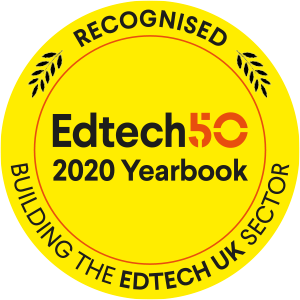Moving from Paper Based Course Materials to E-Learning

If you're a training provider and you're thinking about moving from paper based or face-to-face course delivery and into e-learning then hopefully this post will give you some food for thought.
10 things to think about:
-
Do you want to buy an off-the-shelf system for delivering the course content or do you want build a bespoke system? What about the content? Is it a one off job to create online versions of materials you already have or do you need to be able to produce bespoke online training materials for clients on an ongoing basis? Bespoke solutions tend to cost more but the authoring tools are getting better and external e-learning content developers can be cost effective once an initial template has been created.
-
How much re-work/extra writing is needed? Some of our clients already have well established distance learning materials that are a good basis for online versions of the courses. Others though have materials that have been designed to support face to face delivery - worksheets and presentations. More writing effort is then needed to create equivalent standalone online courses.
-
How interactive do you want the content to be? Basic ‘flat' e-learning content is relatively inexpensive to produce but it's not engaging and it's not always easy to see what value it adds over simply reading a printed workbook or pdf. Building in interactivity - drag and drop, clickable graphics, simple questions with answers - gets the learner involved and should not add substantially to the cost of production.
-
What about graphics? Again, it slightly easier if you've already got printed materials with graphics that can be reused (though printed materials often use black and white images which look far less polished on the web). Our experience is that the cost of good quality graphics and images is the most expensive part of designing and building online content materials but it's definitely money well spent - good quality technical diagrams/graphics with an element of interactivity really stand out.
-
Do you want to deliver assessments online? Learner Management Systems (LMS) that can ‘interact' with your online content have been around for a long time. There's a standard called SCORM and in theory at least any SCORM compliant content should be able to send scores back to a similarly SCORM compliant LMS. A bespoke solution with built in SCORM support gives you the option of using your own bespoke content and buying in extra third party content.
-
Support for mobile devices - particularly iPads - is pretty essential now and that has an important technology implication. Most traditional e-learning content was developed in a technology called Flash and that doesn't work on iPads and iPhones. It's important then to remember - any online course materials (and the system used by the learner to access the course materials) need to iPad compatible ( so HTML5 instead of Flash for mobile support).
-
How much of your ‘back office' do you want to integrate into the online system? There are a whole bunch of functions and activities around the edges of ‘online learning' that could be integrated into/part of a bespoke online learning system. How do you manage enrolments? What about CRM? Do you send work to external tutors for marking? Do you want to use instant messaging to give learners some kind of online real time support? Do you need to make funding claims? Moving training delivery online is an opportunity to look again at some of your other business processes and if you've evolved any kind of spreadsheet based admin function that's beginning to creak around the edges then you should at least consider how a wider online solution might help.
-
Could you use video? Broadband means it's easy to deliver video online to learners and the technology needed to produce high quality video is inexpensive and readily available. In some ways video is the quickest and least expensive way to produce bespoke content and most people can shoot reasonable quality video if they follow some basic guidelines. Shooting video should not put anyone off - with a bit of practice a watchable 5 minute video is probably easier to produce than an engaging PowerPoint presentation.
-
Could you do something different? What about re-designing your content into something that's more learner centric and project based? Create online assignments that really develop a learner's skills and then get them to use something like Google Apps to create presentations, spreadsheets and documents that can be shared with other learners. The newest online learning initiatives like Coursera can deliver courses to tens of thousands of learners because they encourage the peer review of work - so learners learn how to support each other and mark each others work. Could you do something similar?
-
What about using social networking to do something even more different? There are smart ways of building in links with social networking sites like Facebook, LinkedIn and Twitter. The Khan Academy online learning platform lets you update your Facebook timeline with course achievements and it's relatively straightforward to for a software developer to integrate a bespoke solution with LinkedIn - why not let a learner's progress appear on their LinkedIn profile? Twitter is another possibility (probably only if you've got a tech savvy audience) - 37 Signals already use it to provide customer support and you could see how it would give you another way to nurture some real-time interaction.

